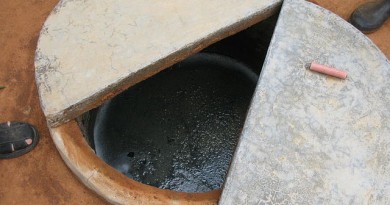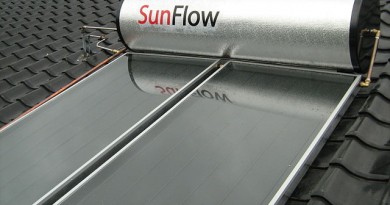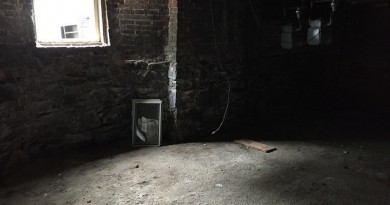How Much Does Lead Paint Removal Cost?
At least three-fourths of the homes in the United States have lead paint inside or outside, on interior walls, inner structures or exteriors. The enclosed lead paint in crawlspaces, or in obscure places such as under cornices, is usually considered non-threatening, and can be painted over, a treatment called encapsulation.
What about the rest? There are still large areas of many homes that must be sanded and ground to remove the lead paint, a toxic process that releases a number of poisons into the air and soil. That’s why it is normally not considered a do it yourself project unless one takes adequate precautions; in most cases, consumers prefer to have a professional do the removal. That brings up the question of lead paint removal cost.
Lead Paint Inspection Cost
Lead paint removal cost begins with the cost for inspection of the property. In general, this inspection is done by a professional assessor/contractor who is registered with the EPA, and this inspector usually comes at a cost of around $350 to $500 for his one-day assessment and services. One reason the inspector is pretty much essential, especially if the home was constructed before 1978 (a point at which lead paint was generally in use without regard for its toxins), is that the house may have numerous lead paint remnants and patches throughout its structure, and only a professional inspection will answer for that. So, that $500 or so must be added to the basic lead based paint removal cost.
Lead Paint Removal Cost
Lead paint removal cost actually involves two possible methods; one is lead based paint removal cost involved in the actual removal of the lead paint by grinding and sanding, while the other lead paint removal cost involves the removal of lead paint by chemical treatment. Lead paint cannot be detected visually (another reason do it yourselfers are discouraged), and surfaces must be tested for its presence. This is the first step in the second removal method, known as lead paint abatement, the process that removes lead paint from the premises chemically. Lead paint abatement cost is marginally less expensive than the cost of lead paint removal, but neither of them is prohibitively expensive.
For example, lead paint abatement cost ranges from $7 to $16 per square foot; the entire house can be treated at around $10,000. Exterior lead paint removal cost, on the other hand, because of the protective screening that must be employed when removing lead paint outdoors, can add another potential $10K to $30K to the cost of lead paint removal.
Lead Paint Removal Certification
Once the process of inspection finishes, the consumer must now add to his lead based paint removal cost by hiring a certified contractor to remove the paint. A 2008 ruling by the EPA indicated that contractors must train to certify individuals as specialists in lead paint removal. Such specialists, by Federal mandate, must be on hand during a renovation or process in which lead paint is being removed or disturbed, and this specialist’s fee, between $50 and $100 in addition to a contractor’s fees is another addition to the cost of lead paint removal.
Lead Paint Removal Companies And Painting Over Lead Paint
They certainly run the most money in terms of lead paint removal cost, but certified lead paint removers are found in most good hardware and contracting businesses. For a home at the standard measurement of 225 square feet, lead based paint removal cost is at the least $10, 000, probably at $50,000 at the high end.
One thing a lead paint removal company can do that is difficult for a do it yourselfer is to encapsulate the building by painting over the already existing lead paint. If the consumer cannot conveniently leave his house while it was being refurbished, the professionals at lead paint removal companies can use chemical compounds with shellac and urethane bases to cover up and seal away the lead paint and its toxic effect. This method isn’t foolproof, as the urethane surface can wear off, but it’s a far more economical alternative, as it runs $.50 per square foot or so and may prove a viable alternative to the basic lead paint removal cost.
Lead Testing Kits
These kits are a good investment for the do it yourselfer who wants to confirm or perhaps match the assessment of the contractor and inspector; they do not add much expense to lead based paint removal cost since they range from $7 to $25 in price. A number of brands exist for this function, and include do it yourself kits such as First Alert and Pro-Lab, priced around $7 each. A SWAB test kit, which can be used over and over again to test any surface, is priced around $23, while Home Depot boasts the D-Lead guaranteed test kit for $20. Finally, Amazon features such kits as Homax, priced at $9.99, and the top end kit from Home Depot, the LEADCHECK at $24.95. One and all are more or less effective, and may give substantial savings to the overall lead paint removal cost.
Lead Paint Removal Products
Lead paint removal cost is also cut considerably by the do it yourselfer who uses his own lead paint removal tool and chemically compounded lead paint removers. These removers include ecologically friendly substances such as SOY-G Urethane paint stripper, made entirely of soybean products, which removes lead based paints deep into the wood grain. Priced between $60 and $75 per gallon, it is one of the most efficient lead paint removal products anywhere, although at least a dozen gallons will be needed for the average sized house, especially the exterior. A smaller kit for touchups and interiors would be the LockupLead removal kit, priced around $35, which includes the gloves and sandpaper-based paint stripping tools. A handy tool for paint removal is the Silent Paint Remover, a massive automatic electrically-powered paint stripper, priced at around $450. All of these equal some pretty good savings in lead based paint removal cost. Again, however, numerous safety precautions must be observed to prevent toxic contamination to the consumer.
- 759SHARES






